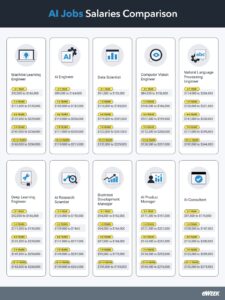62,000 Jobs Lost and Counting:
Profits are up, innovations are going strong, yet big tech is still cutting jobs. This trend of tech layoffs started in 2022. You will remember that hundreds of thousands of people lost their jobs. This was the result of the pandemic. Since then, tech firms have cut jobs in rapid succession every year, and 2025 is proving to be no different. So far, more than 62,000 tech workers have lost their jobs across more than 130 companies the world over.
Tech giants like Microsoft, Google, and Amazon have slashed jobs just this month.

So what is behind this new wave of layoffs?
When the pandemic came, it shut down the world. People were forced to work and socialize from home. The demand for digital services skyrocketed, and the tech industry went on a hiring spree. But as the pandemic restrictions eased, the tech industry retracted, and the layoffs began. In 2022, more than 165,000 tech employees were laid off across more than 1,000 companies. But this was only the beginning. Since then, tech layoffs have continued in rapid succession the world over.

In 2023, at least 264,000 tech employees were laid off across more than 1,100 companies. Last year, there were more than 150,000 job cuts across over 500 companies. It’s now 2025, and the tech layoff wave is still kicking. So far this year, more than 62,000 tech workers have lost their jobs across more than 130 companies. Microsoft alone accounts for about 6,000 of those jobs. Google has been making quiet but consistent cuts. Just this month, it laid off at least 200 people. Amazon has laid off at least 100 people this month.
So, what’s behind this?
Different companies have different reasons. It could be a flatter management structure, slow revenue growth, or economic uncertainty. But for most of them, artificial intelligence is the biggest driver. It has led to sweeping restructuring efforts. For instance, IBM has laid off about 8,000 employees. Most of them were part of the Human Resources Department because the tech giant wants to integrate AI into its back-office functions. And this is part of a broader trend across industries. Language platform Duolingo is phasing out its human contractors in favor of artificial intelligence. McKinsey has laid off more than 10% of its global workforce over the past 18 months.
Some say this is thanks to AI making consulting firms reassess their models. In fact, according to a study, multinational corporations have eliminated more than 100,000 positions this year the world over. Almost half of the layoffs are apparently in redundant positions, like in HR or content, which can be taken over by AI. After all, artificial intelligence includes software-driven agents. They require minimal human supervision, and they are designed to boost efficiency. Sure, the technology is still evolving, and AI is prone to errors. But despite the risks, this is the end goal for most companies—reduced costs.

So firms are slashing human jobs and using their resources to invest in AI-driven automation. And this is cause for major anxiety around the world. While the full extent of this trend’s impact remains unknown, researchers say that hundreds of millions of jobs will be hurt. In fact, 41% of employers want to downsize their workforce and have AI automate certain tasks.
So, what’s the solution? According to experts, we need to accept this dramatic shift and hop on board. Try to assess the risk factor of your job’s future, see how AI fits into your role, and upskill. After all, as things stand, either AI will replace some jobs, or humans with AI knowledge will.
